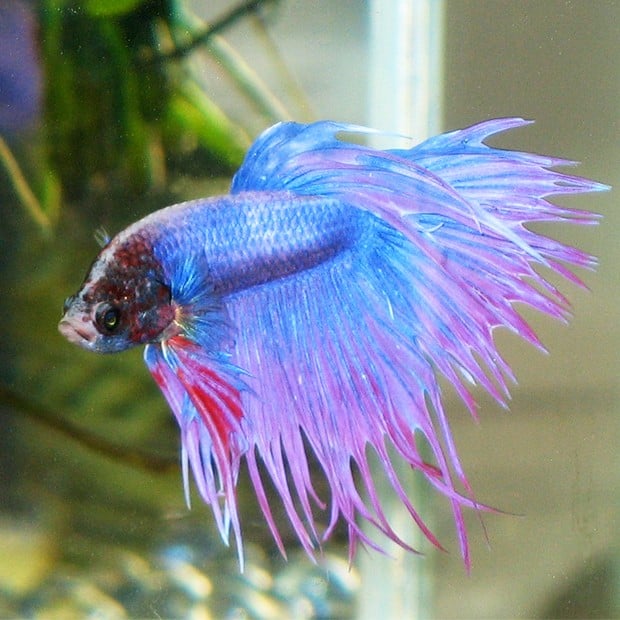Common Betta Fish Diseases and How to Prevent Them
Common Betta Fish Diseases and How to Prevent Them
Blog Article
Reproducing Betta Fish: a Comprehensive Step-By-Step Guide to Efficiently Raising Baby Bettas From Eggs to The Adult Years
Reproducing Betta fish is a meticulous endeavor that requires careful planning and implementation to ensure the successful development of fry from eggs to mature fish. Picking genetically diverse breeding couple with preferable features is only the beginning; developing an optimum atmosphere and comprehending the intricacies of the reproducing process are equally vital. As the male Betta faithfully constructs a bubble nest and guards the valuable eggs, the succeeding stages of treatment and change demand focus to detail and knowledge of finest techniques. How does one navigate the difficult yet fulfilling course of supporting these lively creatures to the adult years?
:strip_icc()/how-long-do-bettas-live-1380782-hero-813aa5d34bab48cdb333edfe02471dad.jpg)
Selecting Breeding Pairs
When beginning on the trip of breeding Betta fish, selecting the ideal breeding pairs is essential to accomplishing desirable traits and a healthy lineage - betta fish. The initial step in this process is to determine the details characteristics you wish to boost or maintain, such as color, fin kind, and physique. It is vital to pick genetically diverse pairs to avoid inbreeding, which can bring about health issues and unwanted attributes
Assess prospective reproducing candidates thoroughly. A healthy and balanced male Betta ought to exhibit lively colors, an active behavior, and well-formed fins, while the lady should additionally display lively pigmentation and a rounded tummy, indicating readiness for spawning. Observing the temperament of both fish is crucial, as aggressive or excessively reluctant individuals may not reproduce successfully.
Documentation of lineage is just as important. Keeping documents of the moms and dad fish's ancestry can aid you track genetic attributes and potential issues. Furthermore, consult reputable breeders or on the internet sources for guidance on selecting suitable sets. Inevitably, investing time in the choice procedure will substantially enhance the possibility of creating solid, vibrant children that fulfill your reproduction objectives (betta fish).

Preparing the Breeding Tank
Developing an optimal reproduction atmosphere is a key action after choosing suitable sets for Betta fish. The reproduction container must be particularly made to supply comfort and stimulate the all-natural reproduction behaviors of the fish. Beginning with a storage tank dimension of a minimum of 10 gallons to ensure adequate room for both the male and women Bettas.
Maintain a mild filtering system to maintain the water tidy while staying clear of solid currents that can stress the fish. Furthermore, an air rock can be added to give oxygenation without interrupting the water surface area excessive.
Temperature level policy is important; aim for a steady variety of 78-82 ° F(25-28 ° C) utilizing a reliable heating unit. The pH degree ought to be preserved in between 6.5 and 7.5, and regular water modifications are necessary to make certain high water quality.
Integrate drifting plants or you can try these out spawning mops to produce concealing spots for the woman, while additionally encouraging bubble nest structure by the male - betta fish. Lastly, make certain the tank is without sharp decors and any potential risks, as the welfare of the fish need to always be prioritized throughout this vital stage of reproduction.
The Breeding Process
Normally, the reproducing procedure for Betta fish includes a collection of distinct and observable habits that suggest preparedness for recreation. The male Betta starts by developing a bubble nest at the water's surface, which functions as a website for the fed eggs. This nest is important, as it supplies a risk-free environment for the eggs till they hatch out.
When the nest is established, the male will display courtship behaviors, such as flaring his fins and exhibiting vibrant shades to bring in the lady. The woman, upon noticing the male's readiness, will certainly react by showing vertical stripes along her body, signaling her receptiveness.
The fertilized eggs then fall to the bubble nest, where the male meticulously accumulates and returns them to the nest. Following this, the male thinks obligation for safeguarding the nest and making sure the safety of the eggs up until they hatch my company out, generally within 24-36 hours.
Caring for Betta Fry
Caring for Betta fry requires cautious interest to their setting and nourishment to guarantee healthy development and growth. After hatching out, Betta fry are extremely little and prone, necessitating a secure and tidy environment.
Feeding Betta fry is just as crucial. Feed them little amounts several times a day, being careful not to overfeed, which can lead to water quality concerns.
Transitioning to Grownup Bettas
As Betta fry fully grown, transitioning them to grown-up Bettas is an essential stage that requires mindful monitoring of their atmosphere and social interactions. This process normally starts when the fry get to around 6 weeks old, whereupon they can be progressively introduced to a much more organized living setting.
To facilitate this transition, it is crucial to make certain that the water specifications-- such as temperature, pH, and ammonia degrees-- are optimal and stable. Grown-up Betta fish flourish in cozy water (around 78-80 ° F) with a pH of 6.5 to 7.5. Slowly acclimate the fry to these problems to minimize stress and anxiety.
Social interactions are another vital aspect; man Bettas are notoriously territorial and aggressive. It is suggested to separate men into private containers as they mature. Female Bettas can be housed with each other, but treatment needs to be required to keep an eye on for signs of hostility.
In addition, dietary modifications need to be made as the fry expand. Integrate top notch pellets and live foods to sustain their growth and health. By handling these variables effectively, you can advertise an effective transition to the adult years for your Betta fish.

Final Thought
Successful reproduction of Betta fish requires mindful interest to detail throughout the entire procedure, from choosing genetically varied pairs to offering optimal treatment site here for fry. Furthermore, a balanced diet plan and gradual adjustment to grown-up atmospheres are vital for the growth and growth of Betta fish.
Report this page